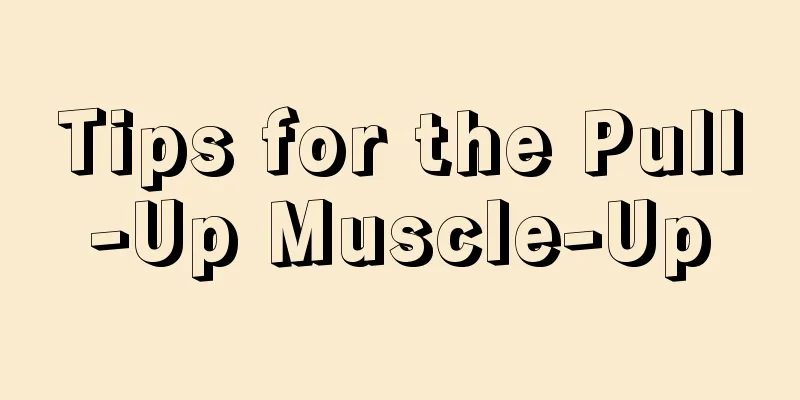What to do if your shoulder hurts after playing badminton

|
Many people like to play badminton, because badminton is also a kind of exercise. Playing badminton can make our body healthier, strengthen our physical fitness, and make our activities more flexible. These are the benefits of playing badminton. However, some people say that their shoulders hurt a lot after playing badminton. So what should we do if our shoulders hurt a lot after playing badminton? 1 Cause and pathology: The occurrence of rotator cuff injury is caused by an acute injury in some patients, and then continues to be damaged due to lack of timely, reasonable and thorough treatment, and gradually turns into a chronic injury; some patients may have no obvious history of trauma, but due to excessive local load, the rotator cuff tendons are repeatedly ground or pulled, causing micro-damage, gradual strain and degeneration. In addition, problems or errors in technical movements, insufficient warm-up, poor shoulder muscles, and poor shoulder joint flexibility are also some of the factors that contribute to rotator cuff injuries. When the shoulder joint is abducted again, especially with internal rotation, the rotator cuff tendons, especially the supraspinatus tendons, will constantly rub against the acromion (such as powerful smashes, overhead smashes, and skateboards, etc.). The friction is most severe when the shoulder joint is abducted 60 to 120 degrees. This is because, within this range of motion, the supraspinatus muscle contracts mainly to fix the humerus to the scapula, bringing the greater tuberosity of the humerus closest to the acromion, thus causing the greatest friction between the supraspinatus muscle and the scapula. When it exceeds 120 degrees, the shoulder blade also rotates, widening the distance between the two and eliminating the friction on the tendon. 2 Symptoms and Diagnosis A. Shoulder pain. The pain is mostly on the outside of the shoulder and may radiate to the upper deltoid muscle or the neck. The pain often occurs when the shoulder joint is abducted or accompanied by internal and external rotation. B pain arc. Pain occurs within an arc of 10 to 120 degrees of shoulder abduction, and disappears beyond 120 degrees. When the shoulder is lowered to below 120 degrees, pain will appear. C tenderness. There is tenderness over the greater tuberosity of the humerus just below the acromion. D. Swelling. Acute patients may have local swelling. E Abduction and external rotation resistance test: positive. 3 Treatment and post-injury recovery exercises: physical therapy, acupuncture, massage, external application of plasters or local drug blocked injections, etc., can achieve good results. Acutely injured patients should rest with their upper arms fixed at 30 degrees of abduction. Patients with acute injuries or acute onset of chronic injuries should rest appropriately. Stop any rapid shoulder rotation activities or technical exercises that involve excessive range of motion. After the acute phase is over, you should start practicing shoulder joint rotation and circulation. When exercising after an injury, one should practice with the upper limbs hanging in a relaxed position, and then gradually increase the shoulder lifting angle. After the pain is basically gone, weight-bearing exercises and gradually transition to specialized exercises can be performed. Patients with chronic diseases can engage in various shoulder activities, but should avoid certain actions that cause pain or aggravate the injury. When doing special exercises, you can first do some movements with lower difficulty and intensity requirements, or change some exercise methods or technical movement styles to control the local load in the special exercises. In addition, during post-injury exercise and rehabilitation, attention should be paid to developing the strength and flexibility of the small muscle groups of the shoulder girdle. When strengthening the rotator cuff muscle group, it is advisable to perform static weight-bearing exercises with the upper limb abducted to 80 degrees - 90 degrees. If you have shoulder pain when playing badminton, you can choose the acupuncture and physiotherapy methods we introduced above to treat yourself and control your disease in time. If you have shoulder pain after playing badminton, you must make timely improvements, reduce the amount of badminton you play, and avoid long-term excessive fatigue. |
<<: Thigh pain, what causes it, how to relieve the symptoms
>>: How to effectively train muscles?
Recommend
What is the correct way to do push-ups?
Many men want to improve their overall physical f...
What exercises can help you grow chest muscles?
Exercising to train chest muscles is a goal that ...
What is an isokinetic muscle trainer?
I have been doing fitness exercises on my own rec...
Is it good to wear compression socks when running?
In our lives, whether people want to lose weight ...
Is it better to run before or after dinner?
Running exercise is an effective way to improve p...
Is it safe to exercise on a treadmill?
In our country, the smog in some places is really...
When is the best time to do push-ups?
Everyone likes a fit body. This kind of body is w...
What are the chest muscle training methods?
Many male friends usually feel that they are not ...
What are some simple ways to train your abdominal muscles?
I believe that in the cold winter, many friends w...
What is the practice of yoga
Nowadays, due to work and space reasons, many spo...
Can I do sit-ups when I have my period?
There are many women who are keen on weight loss ...
How to exercise the subpectoral muscles
Muscle training is a type of exercise we do durin...
Is boxing an aerobic exercise?
Nowadays, more and more people are paying attenti...
What are the benefits of regular swimming?
Nowadays, people pay great attention to their phy...
Why do I feel uncomfortable in my heart after strenuous exercise?
Now more and more people are joining the ranks of...









